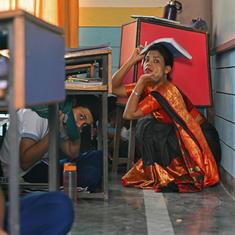Music has been intrinsically linked to religious and spiritual practice in the Indian subcontinent. Rituals and congregational activities in places of worship or elsewhere have seen the all-pervasive presence of music. It is not surprising, therefore, that musicians have often been invited to perform on such occasions, although the performance is in the nature of service to the Almighty instead of a professional assignment. At these times, vocalists choose to set to tune and present texts that may relate to a specific place of worship or to a particular sect. Of course, the inclusion of texts that are expressly related to worship has been a practice among musicians even otherwise, and similarly, their own compositions may reflect a devotional slant.
While some texts that are available in published form contain the names of raags that are prescribed for them, it is not always that musicians adhere to them. For one, the musical structure and the manner in which these raags were presented many centuries ago is not known today, and secondly, present-day musicians may be inspired to compose the texts in other raags.
Guru Nanak Jayanti or the birth anniversary of Guru Nanak (1469-1539), the founder of Sikhism and the first of the 10 gurus, is being celebrated on Saturday. On this occasion, we listen to tracks featuring shabad or texts from the Guru Granth Sahib, the principal religious scripture of the Sikhs, rendered by well-known vocalists from the Hindustani tradition.
The first track has a shabad sung in the raag Gurjari Todi, also known as Gujari Todi and prescribed for the morning. Set to Teentaal, a cycle of 16 matras or time-units, it is sung by the brothers Surinder Singh and Tejpal Singh, more popularly known as Singh Bandhu, important representatives of the Indore gharana. The structure of the composition and its elaboration resembles the exposition of a madhya laya or medium tempo khayal composition. After singing the text, the brothers introduce taans or swift melodic passages.
The second track features popular Banaras gharana exponents Rajan and Sajan Mishra. They sing a shabad based on the raag Charukeshi, a raag that has found entry into the pantheon of Hindustani raags in the recent past via the Carnatic system. Sung to the eight-matra Bhajani theka, the presentation follows the conventional bhajan framework.










